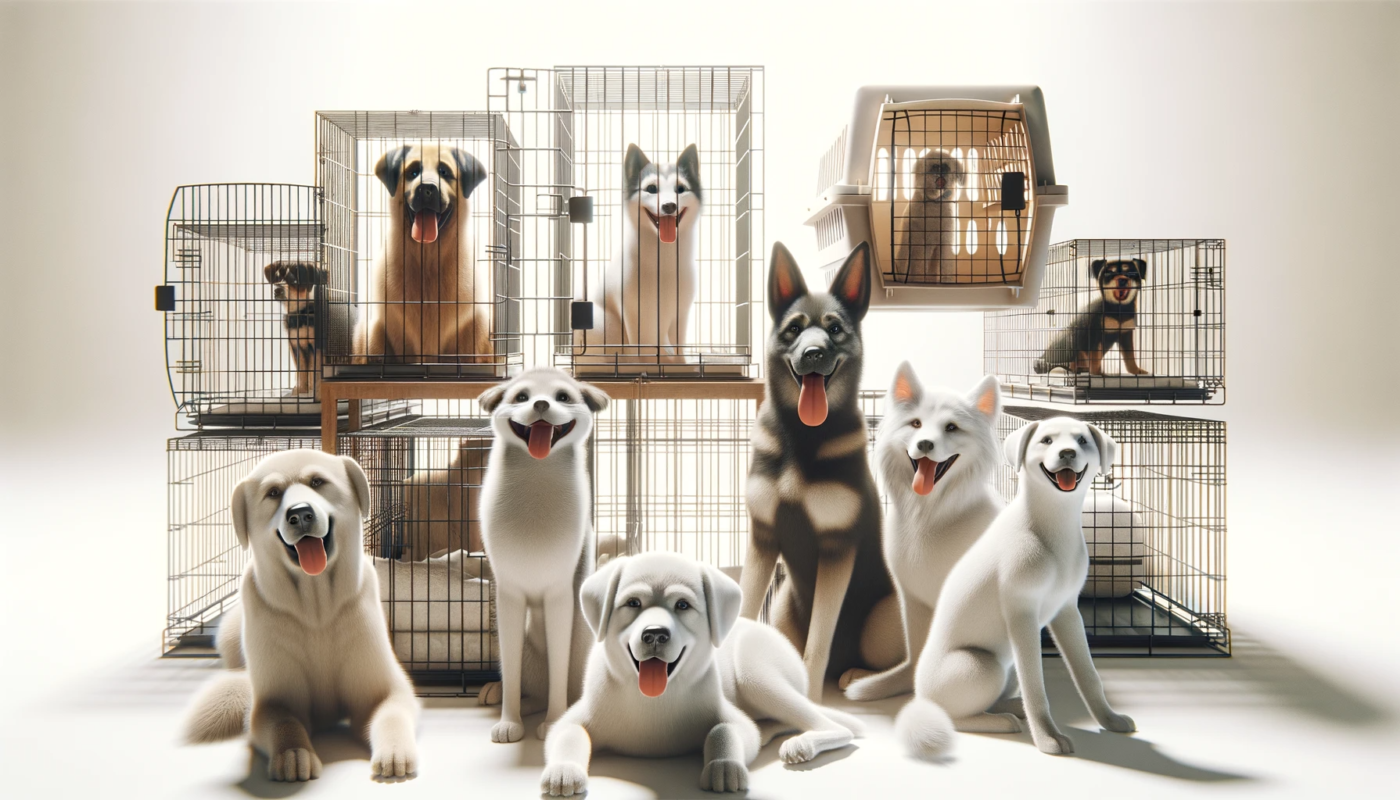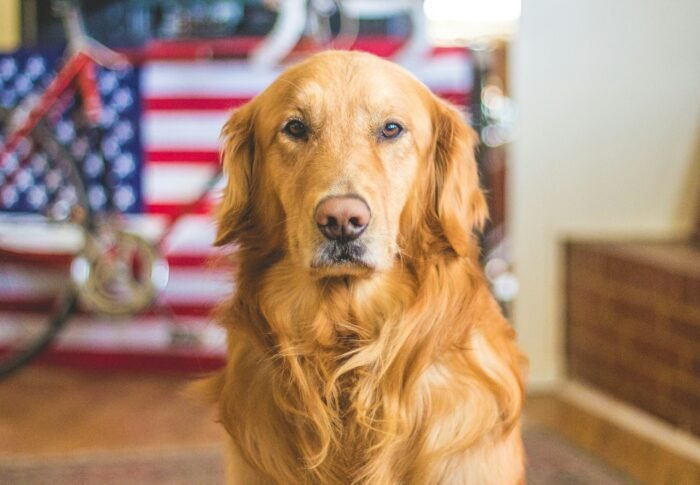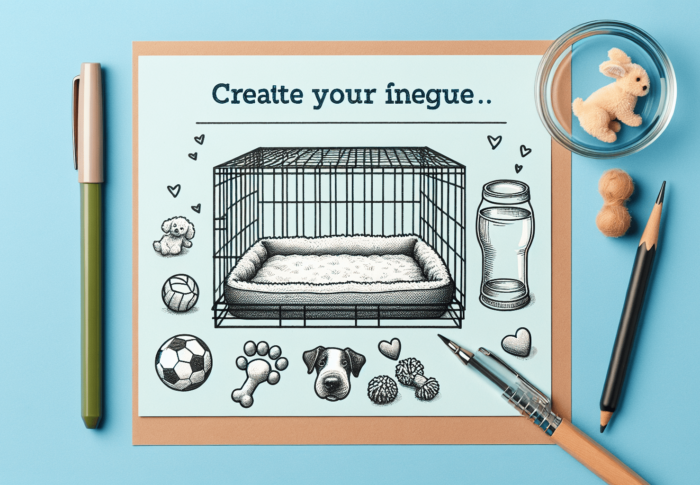
Reduce Anxiety with Crate Training
If you’re looking for an effective way to alleviate anxiety in your beloved furry friend, crate training might just be the solution you’ve been searching for. Whether you have a new puppy or an older dog, crate training can provide a safe and secure space for them to relax and feel at ease. By creating a positive association with their crate, you can significantly reduce anxiety levels and promote a sense of calm. In this article, we will explore the benefits of crate training and provide practical tips to help you get started on this anxiety-reducing journey.
Find products like these on Amazon!
Understanding Anxiety in Dogs
Causes of Anxiety in Dogs
Anxiety in dogs can arise from various causes, and it’s important for pet owners to understand these triggers to address them effectively. Common causes of anxiety in dogs include:
- Separation from their owner or family
- Changes in their environment or routine
- Previous traumatic experiences or abuse
- Fear of loud noises, such as thunderstorms or fireworks
- Lack of socialization or exposure to new experiences
- Genetic predisposition to anxiety disorders
Identifying the cause of anxiety is crucial in developing a suitable approach to manage and reduce it. By understanding the triggers, pet owners can provide their furry friends with the necessary tools to cope and find comfort.
Signs and Symptoms of Anxiety in Dogs
Dogs, like humans, display various signs and symptoms when experiencing anxiety. Some common indicators of anxiety in dogs include:
- Excessive barking or howling
- Destructive behavior, such as chewing furniture or digging
- Restlessness or inability to settle down
- Trembling or shaking
- Pacing or excessive movement
- Loss of appetite or sudden weight loss
- Aggression or fear-based aggression towards people or other animals
- Excessive panting or drooling
- Self-grooming excessively, leading to hot spots or fur loss
Recognizing these signs can help pet owners identify and address anxiety in their dogs proactively. By taking action early, they can prevent the anxiety from escalating and negatively impacting the dog’s well-being.
What is Crate Training?
Definition of Crate Training
Crate training involves teaching your dog to associate their crate with a safe and comfortable space, rather than a place of confinement. It is based on the principle that dogs have an innate instinct to seek out enclosed spaces that mimic dens, which provide security and warmth. By introducing a crate as a positive space, pet owners can create a sanctuary that reduces anxiety and promotes a sense of security for their dogs.
Benefits of Crate Training for Dogs
Crate training offers numerous benefits for dogs, including:
-
Security and comfort: Dogs view their crates as their own personal space, providing them with a sense of safety and security.
-
Aid in housebreaking: Crates can assist in the process of housebreaking puppies or adult dogs by promoting bladder and bowel control.
-
Preventing destructive behavior: When left unattended, dogs may engage in destructive behavior due to anxiety or boredom. A crate provides a safe environment, preventing them from causing damage to themselves or the surroundings.
-
Traveling convenience: Crate-trained dogs are more easily transported, whether it’s for visits to the veterinarian or road trips with the family.
-
Emergency situations: In emergency situations, such as natural disasters, having a crate-trained dog can facilitate safe and efficient evacuation.
By crate training their dogs, pet owners can enhance their overall quality of life and reduce anxiety-related issues.

This image is property of images.pexels.com.
Find products like these on Amazon!
How Crate Training Helps Reduce Anxiety
Creating a Safe and Cozy Space
One of the primary ways crate training helps reduce anxiety in dogs is by providing them with a safe and cozy space. Dogs have an instinctual desire for a den-like environment, and a crate can fulfill that need. By making the crate comfortable with soft bedding, familiar scents, and appropriate ventilation, pet owners can create an environment that offers security and a sense of relaxation.
Establishing Routine and Predictability
Dogs thrive on routine and predictability, and a carefully structured crate training schedule can provide them with a sense of stability. By incorporating crate time into their daily routine, dogs can anticipate and prepare for their time in the crate, reducing anxiety and promoting a feeling of control.
Encouraging Independence and Self-Soothing
Crate training encourages dogs to develop independence and self-soothing skills. By spending time in their crate, dogs learn to entertain themselves with toys or engage in calm behaviors that promote relaxation. This independence helps them cope with anxiety-inducing situations, such as separation from their owner.
Reducing Separation Anxiety
Separation anxiety is a common form of anxiety in dogs, particularly when owners leave for work or other outings. Crate training can help reduce separation anxiety by creating a safe and familiar space for the dog while the owner is away. The crate acts as a secure haven, providing comfort and reducing the dog’s stress during periods of separation.
Step-by-Step Guide to Crate Training
Choosing the Right Crate
The first step in crate training is selecting the most appropriate crate for your dog. Consider the size, material, and design of the crate based on your dog’s breed, size, and temperament. A crate should be spacious enough for the dog to stand, turn around, and lie down comfortably. It should also be durable, well-ventilated, and easy to clean.
Introducing the Crate to Your Dog
To introduce the crate to your dog, start by placing it in a familiar and comfortable area of your home, such as the living room. Leave the crate door open and allow your dog to explore it at their own pace. Avoid forcing or rushing the introduction, as it may create a negative association with the crate.
Gradual Acclimation to the Crate
Once your dog feels comfortable exploring the crate, start conducting short training sessions to gradually acclimate them to spending longer periods of time inside. Encourage your dog to enter the crate using treats or toys and provide positive reinforcement whenever they voluntarily enter.
Positive Reinforcement and Rewards
Throughout the crate training process, utilize positive reinforcement techniques to create positive associations with the crate. Reward your dog with treats, praise, or favorite toys whenever they enter the crate willingly or exhibit calm behavior while inside. Consistency and patience are key in reinforcing positive crate experiences.
Building Crate Time Gradually
As your dog becomes more comfortable and relaxed in the crate, gradually increase the duration of crate time. Begin with short intervals and gradually extend the time your dog spends in the crate, always ensuring their comfort and well-being. Avoid leaving your dog crated for extended periods, especially in the early stages of training.

This image is property of images.pexels.com.
Addressing Common Concerns
Is Crate Training Cruel?
No, when done correctly, crate training is not cruel. It provides dogs with a safe and comforting space. However, it is important to remember that each dog is unique, and some may require alternative behavioral management approaches. It is essential to monitor your dog’s behavior closely and make adjustments as needed to ensure their well-being.
What if My Dog Doesn’t Like the Crate?
If your dog initially shows resistance or fear towards the crate, it’s crucial to approach the training process with patience and positive reinforcement. Gradually introduce the crate, associate it with positive experiences, and provide your dog with treats and praise when they exhibit calm behavior inside.
How Long Can My Dog Stay in the Crate?
The amount of time a dog can spend in the crate depends on various factors, including their age, physical health, and training progress. Puppies have limited bladder control and should not be crated for extended periods. Adult dogs can generally handle longer crate time, but it is essential to prioritize regular exercise, social interaction, and mental stimulation outside of the crate.
What to Do If Your Dog Has an Accident in the Crate
Accidents can happen during crate training, especially with young or untrained dogs. It’s important to avoid punishment, as it can create a negative association with the crate. Instead, focus on reinforcing positive behaviors and gradually increase crate time as your dog’s bladder control improves. Clean the crate thoroughly with pet-friendly cleaning products to remove any odors that may attract your dog to eliminate again.
Supplementary Tools and Techniques
Calming Pheromones and Aromatherapy
Using calming pheromone sprays or diffusers can help create a relaxed environment within the crate. These products mimic natural pheromones released by mother dogs, promoting a sense of security and calmness. Additionally, incorporating calming aromatherapy oils, such as lavender or chamomile, can further soothe anxious dogs.
Music and White Noise
Playing calming music or using white noise machines can help drown out external noises that may trigger anxiety in dogs. Soft, instrumental music or nature sounds can create a serene atmosphere within the crate, promoting relaxation.
Interactive Toys and Puzzles
Providing interactive toys and puzzles inside the crate can help alleviate boredom and redirect anxious energy. Engaging toys, such as treat-dispensing puzzles or chew toys, can keep your dog mentally stimulated while inside the crate.
Soothing Clothing and Wraps
Some dogs find comfort in wearing calming shirts or wraps that apply gentle pressure to their bodies. These garments can help reduce anxiety in dogs by providing a swaddling-like sensation, similar to the feeling of being held or hugged.

This image is property of images.pexels.com.
Creating a Safe and Comfortable Crate
Choosing the Right Bedding
Selecting the appropriate bedding for your dog’s crate is essential in creating a safe and comfortable environment. Opt for bedding that is soft, machine-washable, and provides insulation. Avoid using bedding materials that pose choking hazards or are difficult to clean.
Adding Familiar Scents and Objects
Introduce familiar scents and objects into the crate to enhance your dog’s comfort and security. Place items with your scent, such as a unwashed t-shirt or blanket, inside the crate. Familiar smells can provide reassurance and further alleviate anxiety.
Temperature and Ventilation Considerations
Maintaining a comfortable temperature and proper ventilation inside the crate is crucial for your dog’s well-being. Avoid placing the crate in drafty areas or direct sunlight. Ensure adequate air circulation without creating excessive drafts.
Ensuring the Crate is Properly Secured
To maximize safety, ensure that the crate is properly secured and stable. The crate should be placed on a level surface and secured to prevent tipping or accidental opening. This ensures that your dog remains safe and secure while inside the crate.
Maintaining a Positive Crate Experience
Avoiding Using the Crate for Punishment
To maintain a positive association with the crate, it is crucial to avoid using it as a form of punishment. Punishment can instill fear and create negative connotations, making it more difficult for your dog to feel at ease in the crate.
Regular Crate Cleaning and Hygiene
Maintaining a clean and hygienic crate is essential for your dog’s comfort and well-being. Regularly clean your dog’s crate, including bedding and any toys or accessories inside. This prevents the accumulation of dirt, bacteria, and odors that may cause discomfort or illness.
Taking the Crate on Travel or Visits
Crate training can benefit dogs beyond the home environment. Familiarity with a crate allows for easier transportation during travel or visits to unfamiliar locations. A well-trained dog will view their crate as a safe haven, regardless of the surroundings.
Monitoring Your Dog’s Comfort Level
Continuously monitor your dog’s comfort level while in the crate. If you notice signs of distress, such as excessive panting, drooling, or agitation, it may indicate that adjustments are necessary. Each dog has different needs, so pay close attention to their behavior and make changes accordingly.
Seeking Professional Help
When to Consult a Veterinarian or Professional Trainer
While crate training can be highly effective in reducing anxiety, there may be situations where professional guidance is warranted. If your dog’s anxiety persists or escalates despite consistent crate training, consult with a veterinarian or a professional dog trainer. They can assess your dog’s specific needs and provide expert guidance tailored to their individual circumstances.
Additional Resources and Support for Crate Training
Various resources, such as books, online forums, and training classes, can provide additional support for crate training. These resources offer expert advice, tips, and techniques to enhance your crate training experience. Seeking out these resources can provide valuable insights and support as you navigate the crate training journey with your dog.
Conclusion
Crate training is a powerful tool for reducing anxiety in dogs and promoting their overall well-being. By providing a safe and cozy space, establishing routine and predictability, encouraging independence and self-soothing, and addressing separation anxiety, crate training offers various benefits for dogs. Following a step-by-step approach, addressing common concerns, utilizing supplementary tools and techniques, and creating a safe and comfortable crate environment are essential in achieving successful crate training outcomes. Always remember to prioritize your dog’s comfort, monitor their behavior, and seek professional help when needed. With patience, consistency, and positive reinforcement, crate training can be a transformative experience for both you and your furry friend.
Find products like these on Amazon!







-
-
1 day
Tagged Dog care, Separation anxiety, tips and tricks